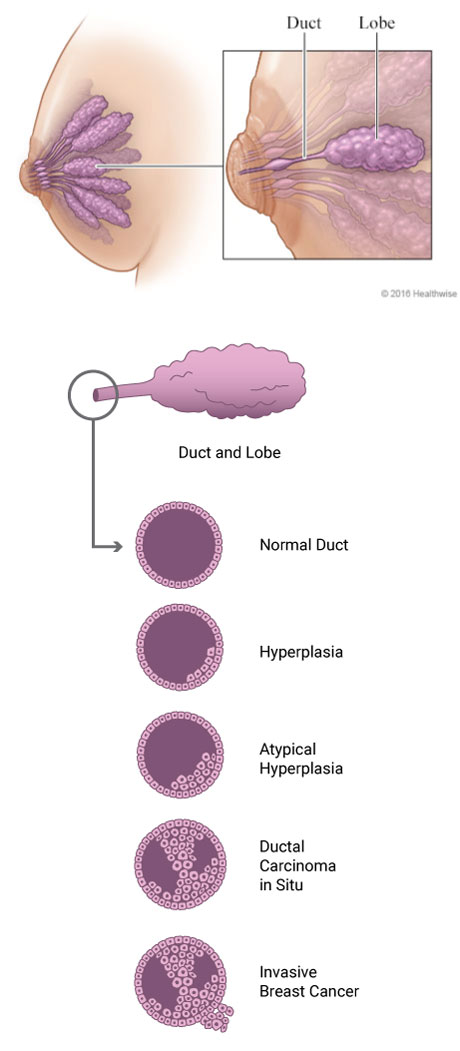Atypical hyperplasia describes a change in cells that line the ducts or lobules of the breast. Normally the cells that line the ducts and lobules of the breast are 1 to 2 layers of cells that look quite like one another under a microscope. Figure 1, below, shows you the cell changes seen in the condition.
In a condition called
hyperplasia, these cells begin to “over grow” and develop several layers of thickness. Sometimes, these cells change their features and become abnormal. When this happens it may also be called an
atypical change. Two terms are used to describe where the change is taking place:
-
atypical ductal hyperplasia (ADH) is found in the ducts
-
atypical lobular hyperplasia (ALH) is found in the lobules
It can take many years for benign conditions to develop into breast cancer.
Many people who have atypical hyperplasia don't know because it doesn't show up on regular screening mammography or self-exam. If you know you have this condition because of a biopsy or other procedure, you should speak with your healthcare provider about a plan to watch and/or treat the condition.

